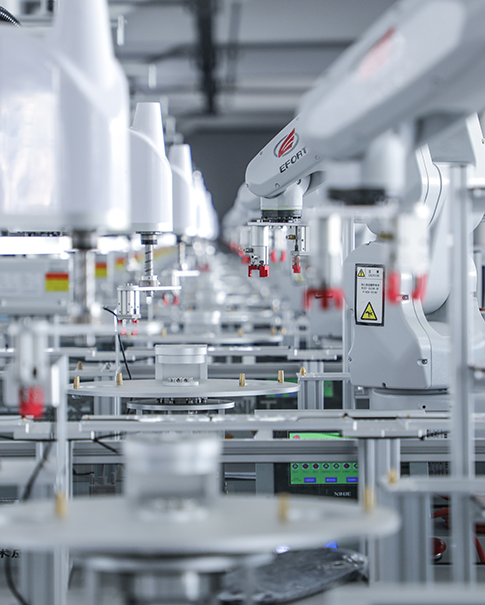In the world of power generation, steam turbines are the backbone of electricity production. These massive machines operate under extreme thermal and mechanical stresses, especially during startup and shutdown cycles. One of the most critical—and often overlooked—aspects of turbine health monitoring is differential expansion (DE) measurement. Differential expansion occurs when a turbine's rotor and casing heat up or cool down at different rates, causing them to expand or contract unevenly. If left unchecked, this can lead to catastrophic rubbing between rotating and stationary components, resulting in costly damage and unplanned downtime. For decades, Bently Nevada has been a leader in condition monitoring solutions, and their latest 25 mm eddy current sensor system represents a significant leap forward in reliability, durability, and ease of integration.
The newly enhanced 25 mm eddy current sensor system builds upon Bently Nevada’s legacy of precision monitoring while introducing several key improvements:
Enhanced Durability for Harsh Environments
Built to withstand high temperatures, humidity, and vibration—common in power plant environments.
Longer operational lifespan, reducing the need for frequent replacements (ideal for plants with 5+ years between overhauls).
Backward Compatibility & Easy Retrofitting
Works seamlessly with existing Bently Nevada monitoring systems, ensuring a smooth transition.
Can replace older 25 mm and 35 mm sensor installations without requiring major system modifications.
Multiple Configuration Options
Available in different housing types and thread sizes to fit various turbine designs.
Uses the same power requirements and signal outputs as previous models, simplifying upgrades.
Proven Eddy Current Technology
The Proximitor® sensor ensures highly accurate measurements even in extreme conditions.
Reduces false alarms by providing stable, reliable data for condition monitoring systems.
Differential expansion might sound like a minor technical detail, but in reality, it’s one of the most critical parameters in turbine health monitoring. Here’s why:
Prevents Catastrophic Failures
Excessive differential expansion can cause rotor-stator rubbing, leading to blade damage, bearing wear, and even complete turbine failure.
Early detection allows operators to adjust startup/shutdown procedures to minimize stress.
Optimizes Turbine Lifespan
By monitoring DE trends, maintenance teams can predict wear patterns and schedule repairs before major issues arise.
Reduces unplanned outages, which can cost power plants millions in lost revenue.
Supports Condition-Based Maintenance
Instead of relying on fixed maintenance schedules, DE data enables predictive maintenance, optimizing operational efficiency.
Integrates with Bently Nevada’s suite of monitoring tools for a complete machinery health solution.
Bently Nevada’s upgraded DE sensor system isn’t just a theoretical improvement—it’s already making a difference in critical applications:
Large-Scale Steam Turbines (Fossil & Nuclear Plants)
Ensures safe thermal transients during startups and shutdowns.
Protects against uneven expansion in multi-stage turbines.
Combined-Cycle Power Plants
Monitors gas and steam turbine interactions to prevent misalignment issues.
Helps balance fast-start requirements with mechanical safety.
Industrial Turbines (Chemical, Oil & Gas)
Guards against thermal shock in process-driven turbines.
Provides reliable data for rotor position monitoring in critical compressors.
Retrofitting Older Monitoring Systems
Many plants still rely on outdated DE sensors—this upgrade offers a drop-in replacement with better performance.
Reduces integration headaches by maintaining compatibility with legacy monitoring systems.
If you’re considering upgrading to Bently Nevada’s new system, here are some important factors to keep in mind:
Compatibility Check
Verify that your existing monitoring system can support the new sensors.
Consult Bently Nevada’s technical team for retrofit recommendations.
Installation Best Practices
Ensure proper calibration and alignment to avoid measurement errors.
Follow thermal compensation guidelines for accurate readings.
Training for Operations & Maintenance Teams
New sensors may require updated diagnostic protocols.
Ensure staff understands how to interpret DE trends for predictive maintenance.
Long-Term Cost Benefits
While the initial investment may be higher, reduced downtime and extended turbine life provide a strong ROI.
Fewer false alarms and sensor replacements mean lower lifetime costs.
Bently Nevada’s latest 25 mm eddy current differential expansion sensor system is more than just an incremental upgrade—it’s a strategic enhancement for power plants and industrial facilities that rely on turbine uptime. By combining rugged durability, seamless compatibility, and precise measurement capabilities, this system helps operators avoid costly failures, optimize maintenance schedules, and extend equipment life. For plant managers, reliability engineers, and maintenance teams, upgrading to this new sensor technology isn’t just an option—it’s a proactive step toward smarter, more efficient turbine monitoring. Is your facility still using outdated DE sensors? Now might be the perfect time to make the switch and future-proof your monitoring system.
 Network Supported
Network Supported